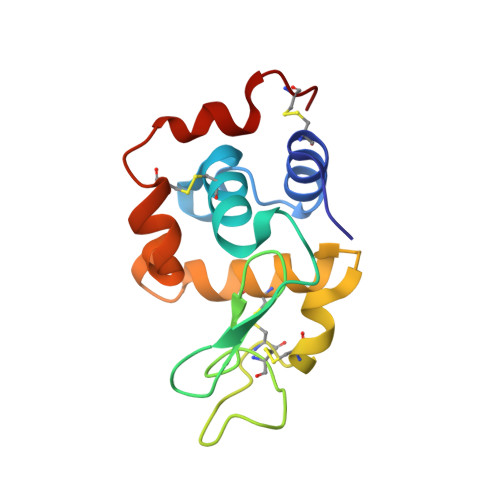EIGER detector: application in macromolecular crystallography.
Casanas, A., Warshamanage, R., Finke, A.D., Panepucci, E., Olieric, V., Noll, A., Tampe, R., Brandstetter, S., Forster, A., Mueller, M., Schulze-Briese, C., Bunk, O., Wang, M.(2016) Acta Crystallogr D Struct Biol 72: 1036-1048
- PubMed: 27599736
- DOI: https://doi.org/10.1107/S2059798316012304
- Primary Citation of Related Structures:
5LIN, 5LIO, 5LIS - PubMed Abstract:
The development of single-photon-counting detectors, such as the PILATUS, has been a major recent breakthrough in macromolecular crystallography, enabling noise-free detection and novel data-acquisition modes. The new EIGER detector features a pixel size of 75 × 75 µm, frame rates of up to 3000 Hz and a dead time as low as 3.8 µs. An EIGER 1M and EIGER 16M were tested on Swiss Light Source beamlines X10SA and X06SA for their application in macromolecular crystallography. The combination of fast frame rates and a very short dead time allows high-quality data acquisition in a shorter time. The ultrafine ϕ-slicing data-collection method is introduced and validated and its application in finding the optimal rotation angle, a suitable rotation speed and a sufficient X-ray dose are presented. An improvement of the data quality up to slicing at one tenth of the mosaicity has been observed, which is much finer than expected based on previous findings. The influence of key data-collection parameters on data quality is discussed.
- Swiss Light Source, Paul Scherrer Institute, 5232 Villigen, Switzerland.
Organizational Affiliation:

















